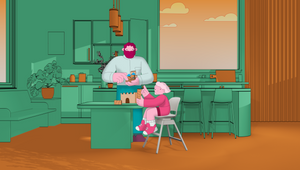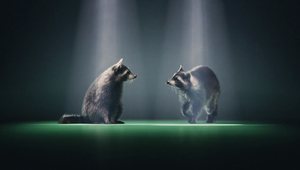
The Mill's Haunting DFT Spot Has a Very Transparent Message

Working in collaboration with AMV and ScanLab, The Mill have developed a unique and powerful way of using Lidar technology for DFT’s latest ad ‘Transparent’.
The 40 second spot plays on the idea that if a driver could see the danger ahead through a bend, they would slow down. Using Lidar technology to take scans of a countryside location, The Mill have created a 3D point cloud environment, giving the viewer a unique perspective, with which they can literally see through a bend in the road.
Lidar is usually used in geology, forestry and contour mapping. Lidar scanning uses laser technology to create accurate 3D point cloud interpretations of environments and objects which can be rendered as semi-transparent images.
Using a series of point cloud images from location scans, The Mill’s VFX team stitched these together and animated camera moves to create a moving sequence, as well as enhancing the transparency of aspects of the picture.
Producer Jarrad Vladich comments, “Co-directors Steve Jones, Martin Loraine and Giles Revell were instrumental in visualising this piece from what was very conceptual beginning. Walking the roads and forests of West Sussex with our CG team, a narrative was built using storyboards and visualising which areas would best communicate the key themes of country driving, hidden dangers and speed.”
Lead 3D artist Tom Raynor comments on the technical process, “This project provided a unique set of challenges. LIDAR is traditionally only able to capture a snapshot of a point in time, but through the use of animation we were able to see this technique brought to life. We rigged a number of vehicles so that they were able to be animated using realistic car dynamics, which added realism and drama to the piece.
The scanning process produces a point cloud file containing the millions of points in 3D space. For each scan we were also provided with a high dynamic range panoramic photograph taken from the same position as the scan. We went through the laborious process of aligning and mapping the colour images to the scan data for each scan and painting out any uwanted artifacts before animating.”















